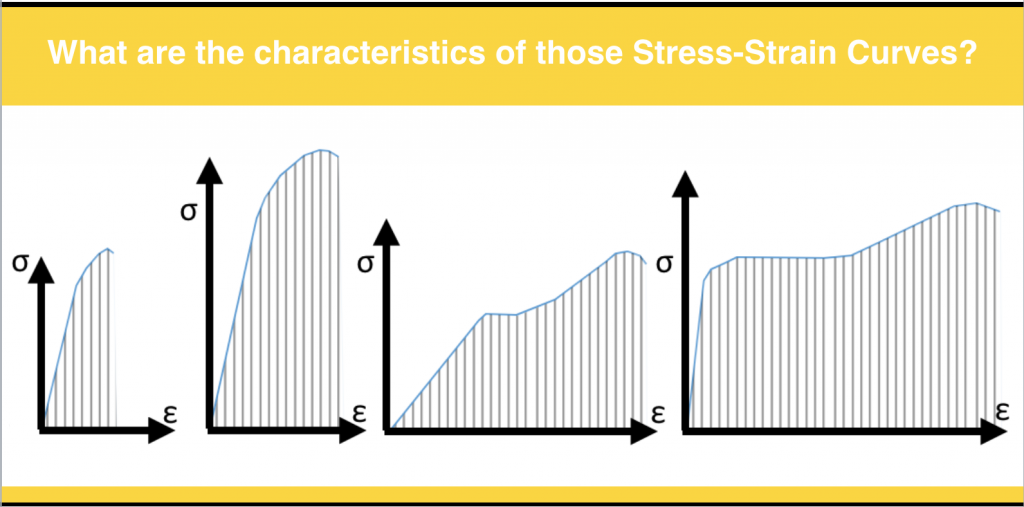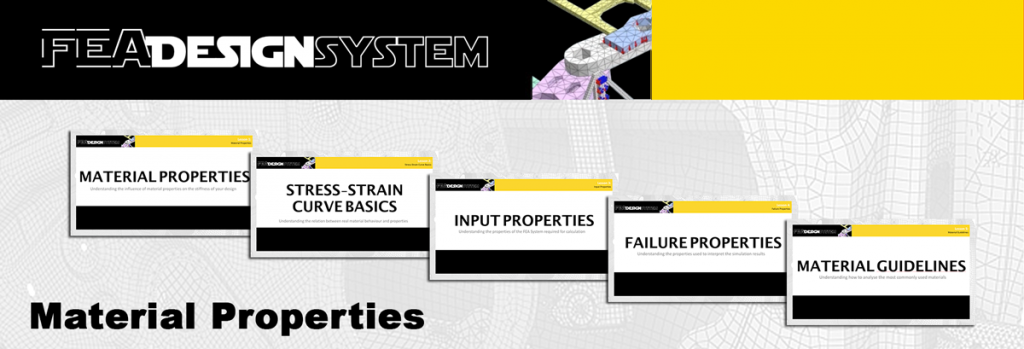
Are you able to tell me right off the bat what are the characteristics of the materials described by those stress-strain curves?
I know that it took me a long time before becoming able to characterize my material just by looking at his stress-strain curve…
But that’s actually not as difficult as it seems and it is a skill very useful to have when you are an FEA Analyst!
Why are material properties so critical in your FEA Analysis?
One thing that I understood very quickly about FEA simulation is the concept of garbage in – garbage out
In one word: If you input garbage in your FEA System, you get ALWAYS garbage at the exit.
No need to say that one of the FIRST assumptions you do in FEA is about your material data
It seems simple… just a few fields to fill in and that’s it, right?
It may be sufficient to do that most of the time, especially when you are simulating parts in steel material…
But there is something I always emphasize ( whether in my blog or in my courses):
Applying something without thinking about it and knowing what it means and the assumptions that are made… isn’t something you would await from a real engineer
Engineers are creators and builders. You cannot build if you don’t understand how things work.
You could ask anyone to click on a button called « Al 6061-T6 » inside a software and choose an aluminum material.
Does this mean that it is correct? Nope.
If your role is to design part and systems composed of various materials, you have to understand the assumptions that are made about each of those materials.
Here’s a simple example…
Many types of aluminum’s have a nonlinear elastic range… which means that a big error will be introduced if you try to analyze them in the same way as a steel material.
If that’s obvious for you… you may stop reading, this course is probably not for you.
BUT (and that’s a big but)
If you are not sure that you understand all the material properties and that you are the kind of engineer or designer who wants to « get it right », then you should probably read this course.
To be frank with you, I believed myself that I knew everything about this topic before making this course for you, but I was surprised to realize that there were many topics that I actually didn’t understand as much as I thought I did (especially the part about failure properties and brittle materials…)
I had to go back to study and deepen my own knowledge before being able to make that knowledge extra-clear and comprehensible for you.
That’s why I know that you will get a lot from this course and that you will enjoy it!
Who am I by the way?

My name is Cyprien Rusu, I am a CAE engineer with more than 10 years of experience in FEA who wants to teach the right bases of FEA Simulation to designers, engineers and everyone aspiring to get it right!
Hundreds of FEA students followed my free FEA webinars on Youtube, read my blog articles on feaforall.com and joined my FEA courses to learn more and improve their understanding of FEA and become better engineers!
The FEA courses I create are the easiest to understand material available on the internet!
Introducing FEA Design System 3: Material Properties

Here’s what you will learn in this course:
- Where the stiffness comes from and 2 ways you can increase it in your design
- The material properties you need to know to do a linear static analysis
- The two types of properties that will influence your analysis and your results
- A deep understanding of how material properties influence my simulation results
- How to read the stress-strain curve of my material and understand right away its characteristics right from the curve
- The 3 important material characteristics that will be used to describe it and characterize immediately its behavior
- How to choose appropriate allowables for your FE analysis
- The 3 main failure properties that you must understand
- The fundamental difference between ductile and brittle materials
- Some guidelines about steel materials and a method to analyze them in general
- How grey iron behaves and how you can use this material model in your simulation
- Some knowledge about castings, weldments and plastic materials
What is provided inside this course?
This course is a complete « at your own pace » online video course composed of more than 2 hours of video and other material. Once you joined the course, it becomes available to you forever. Just log into the course system and access to the videos, PDFs, and articles that you would like to read.
The Course is structured of the 5 following lessons:
- Lesson 1- Material properties: Understanding the influence of material properties on the stiffness of your design
- Lesson 2- Stress-Strain Curve Basics: Understanding the relation between real material behavior and properties
- Lesson 3- Input Properties: Understanding the properties of the FEA System required for calculation
- Lesson 4- Failure Properties: Understanding the properties used to interpret the simulation results
- Lesson 5 – Material Guidelines: Understanding how to analyze the most commonly used materials
What people say about me and my courses:
 How can I join the course?
How can I join the course?
- Purchase the course by clicking on the Purchase button below
- You will be redirected to the paypal website where you have to enter either your paypal credentials or directly your credit card information if you do not have a paypal account
- After completing the purchase on paypal, you will receive an email with your student login and password
- Using these credentials, you can log into your courses section where you have a lifetime access to your course “FEA Design System 3: Material Properties”